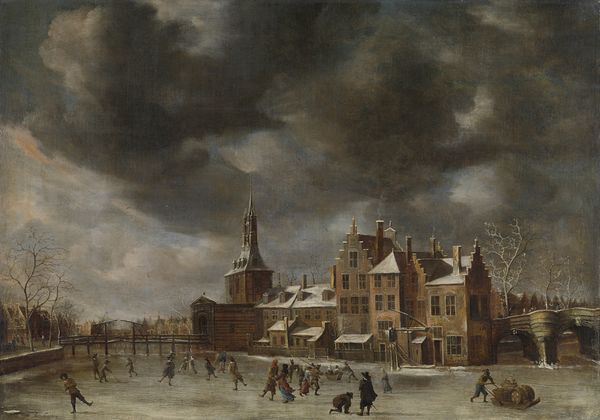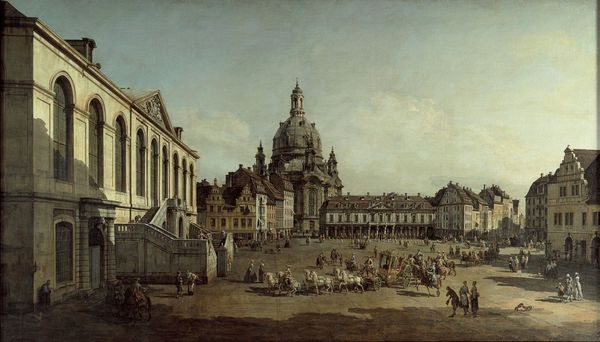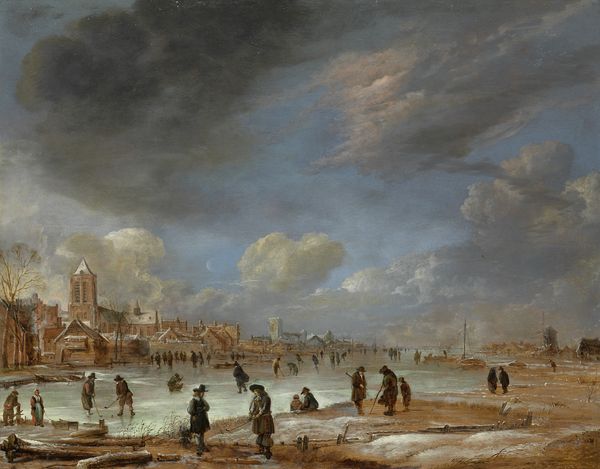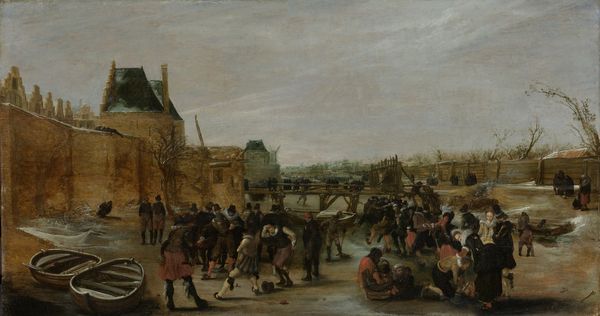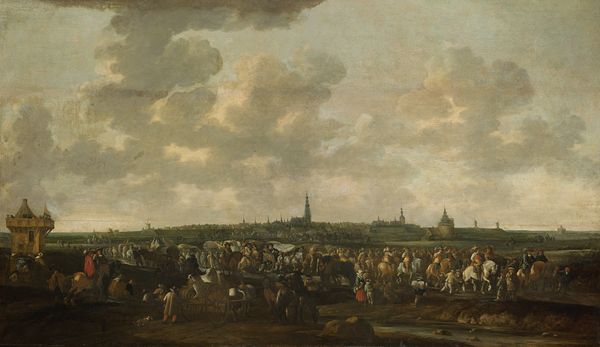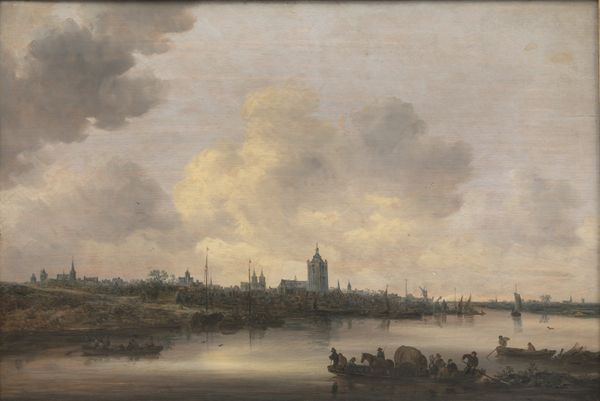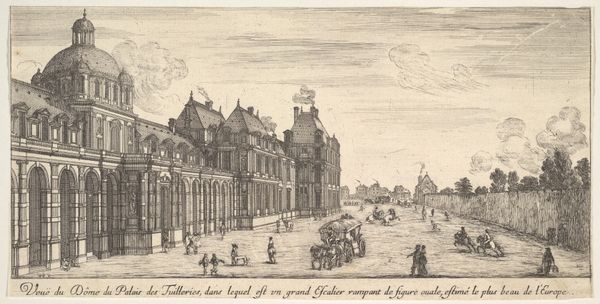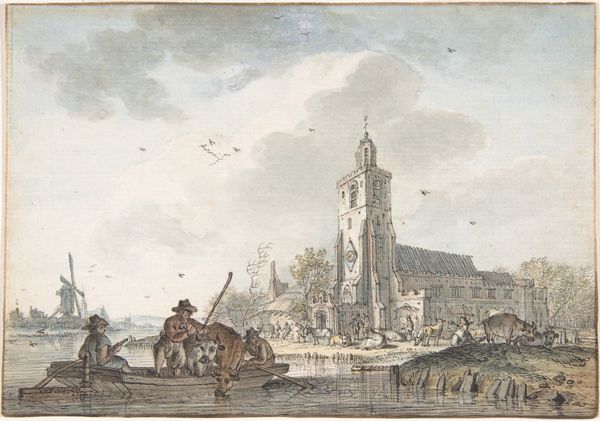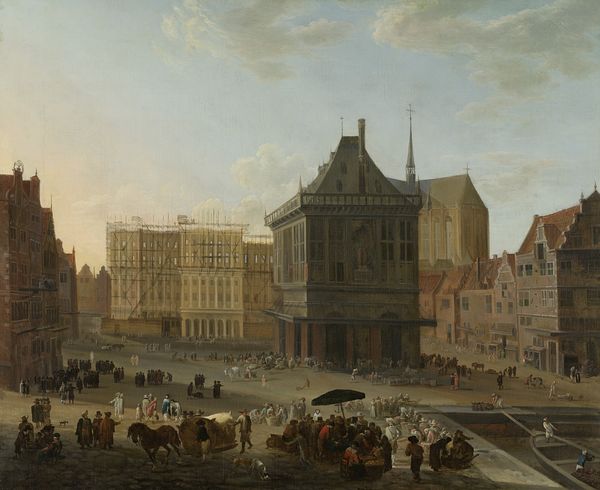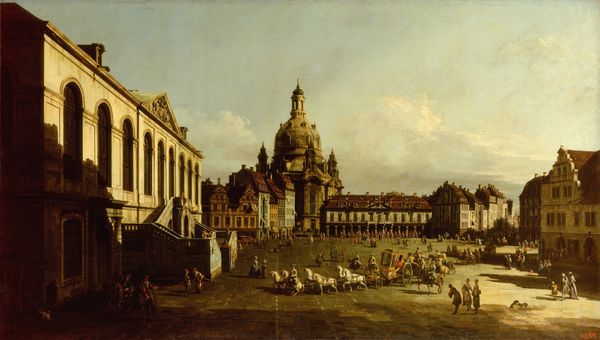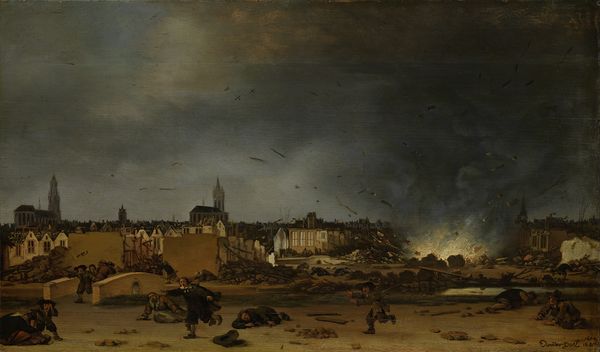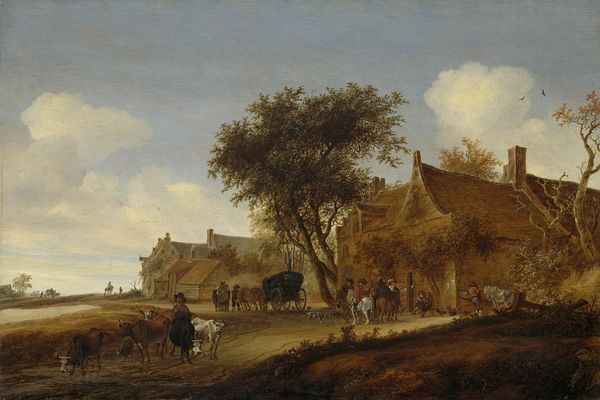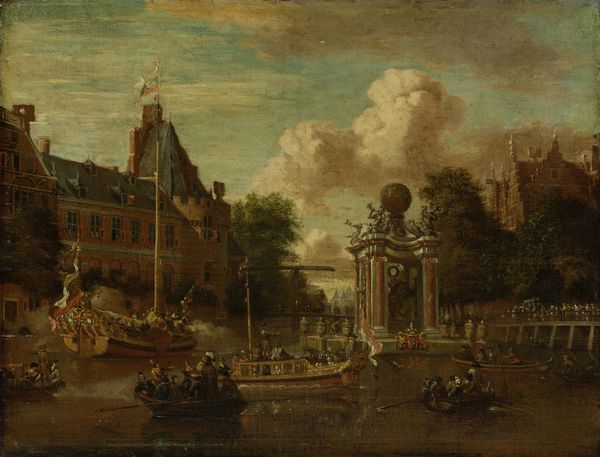
painting, plein-air, oil-paint, oil, canvas
#
baroque
#
painting
#
plein-air
#
oil-paint
#
oil
#
landscape
#
oil painting
#
canvas
#
cityscape
#
genre-painting
#
realism
#
building
Dimensions: 94.2 x 124.5 cm
Copyright: Public Domain
Curator: Bernardo Bellotto’s cityscape, "Dresden Neustadt with a View Towards the North," painted sometime after 1750, presents a window into 18th-century urban life, capturing not just the buildings but also the activities of its residents. Editor: You know, it gives me a peaceful feeling, but also, weirdly, makes me a little sad. There's something so exposed about the figures on that wide open square. Almost like a stage, and they're the players. Curator: Absolutely, the vastness can create a sense of vulnerability. Think about how urban planning during the Baroque era frequently implemented expansive public spaces, both celebrating civic power and simultaneously making individuals more visible and, by extension, controllable. Consider this alongside class dynamics; who gets to occupy and benefit from this space, and who is potentially surveilled? Editor: So, less "room for everyone," more "everyone on display"? I get that. The way Bellotto captures the light... it’s not idealized. There's a kind of realism that almost feels like early documentary photography. What I mean is, the cobblestones are actually kinda gritty. Curator: Bellotto was, indeed, known for his detailed realism, a move away from purely idealized representations. We see this through his use of perspective and his meticulous depiction of architectural details, making his cityscapes valuable historical records. Also, it is key to discuss how Bellotto's identity and relationship to the space shaped the artwork's portrayal of the city, since he spent a large portion of his career in Dresden and later moved to Warsaw, chronicling the socio-political environment that defined his career and personal identity. Editor: I guess that’s the thing. History isn't just kings and queens—it's folks just hanging out in the square, horses pulling carts, the light hitting those cobblestones just so...it’s like Bellotto bottled a whole ordinary day, you know? Curator: Indeed, and unpacking those ordinary moments reveals volumes about power, visibility, and the complex relationship between individuals and the spaces they inhabit. It asks us to reconsider who and what counts as historically significant, even down to the details of cobblestones and clouds. Editor: Makes you want to jump right into the painting and join them for a stroll—while keeping an eye out for those dynamics you mentioned, of course! Thanks for adding some complexity to what seemed like a placid scene.
Comments
stadelmuseum about 2 years ago
⋮
Bernardo Bellotto studied under his uncle Giovanni Antonio Canal (called Canaletto) and adopted not only his moniker but also his preference for painting vedute. Unlike his uncle, however, the well-travelled Bellotto became known less for his views of Italian cities than for his vedute of Dresden, Munich, Vienna and Warsaw. At first glance, this contemporary copy of a view of Dresden’s Neustadt looks the same as the original. On closer inspection, however, various alterations catch the eye: not only is the view more tightly framed, but the details of the market scene, the groups of figures and stalls also differ from the Dresden original.
Join the conversation
Join millions of artists and users on Artera today and experience the ultimate creative platform.
